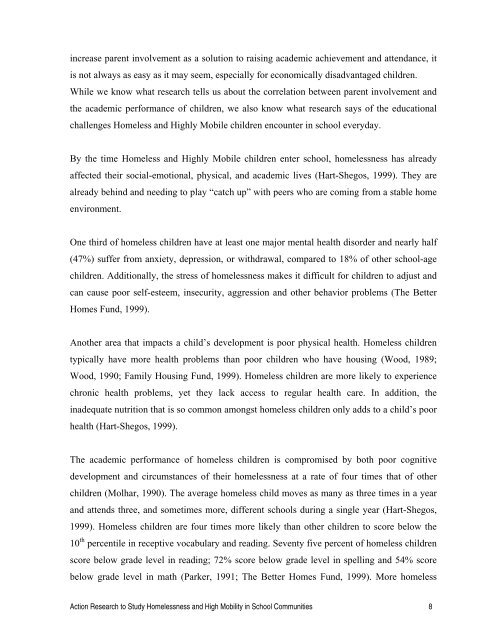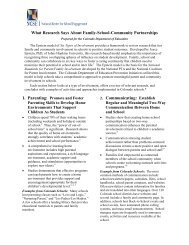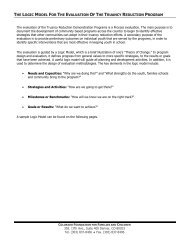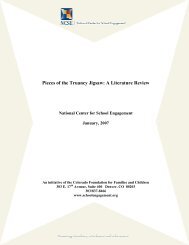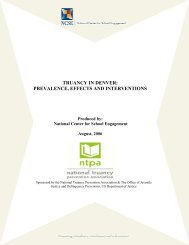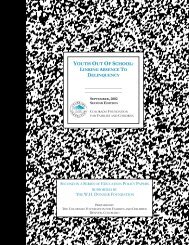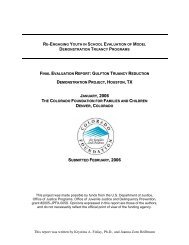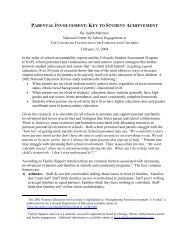Section 1: Academic Achievement - National Center for School ...
Section 1: Academic Achievement - National Center for School ...
Section 1: Academic Achievement - National Center for School ...
You also want an ePaper? Increase the reach of your titles
YUMPU automatically turns print PDFs into web optimized ePapers that Google loves.
increase parent involvement as a solution to raising academic achievement and attendance, it<br />
is not always as easy as it may seem, especially <strong>for</strong> economically disadvantaged children.<br />
While we know what research tells us about the correlation between parent involvement and<br />
the academic per<strong>for</strong>mance of children, we also know what research says of the educational<br />
challenges Homeless and Highly Mobile children encounter in school everyday.<br />
By the time Homeless and Highly Mobile children enter school, homelessness has already<br />
affected their social-emotional, physical, and academic lives (Hart-Shegos, 1999). They are<br />
already behind and needing to play “catch up” with peers who are coming from a stable home<br />
environment.<br />
One third of homeless children have at least one major mental health disorder and nearly half<br />
(47%) suffer from anxiety, depression, or withdrawal, compared to 18% of other school-age<br />
children. Additionally, the stress of homelessness makes it difficult <strong>for</strong> children to adjust and<br />
can cause poor self-esteem, insecurity, aggression and other behavior problems (The Better<br />
Homes Fund, 1999).<br />
Another area that impacts a child’s development is poor physical health. Homeless children<br />
typically have more health problems than poor children who have housing (Wood, 1989;<br />
Wood, 1990; Family Housing Fund, 1999). Homeless children are more likely to experience<br />
chronic health problems, yet they lack access to regular health care. In addition, the<br />
inadequate nutrition that is so common amongst homeless children only adds to a child’s poor<br />
health (Hart-Shegos, 1999).<br />
The academic per<strong>for</strong>mance of homeless children is compromised by both poor cognitive<br />
development and circumstances of their homelessness at a rate of four times that of other<br />
children (Molhar, 1990). The average homeless child moves as many as three times in a year<br />
and attends three, and sometimes more, different schools during a single year (Hart-Shegos,<br />
1999). Homeless children are four times more likely than other children to score below the<br />
10 th percentile in receptive vocabulary and reading. Seventy five percent of homeless children<br />
score below grade level in reading; 72% score below grade level in spelling and 54% score<br />
below grade level in math (Parker, 1991; The Better Homes Fund, 1999). More homeless<br />
Action Research to Study Homelessness and High Mobility in <strong>School</strong> Communities 8


